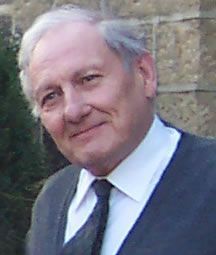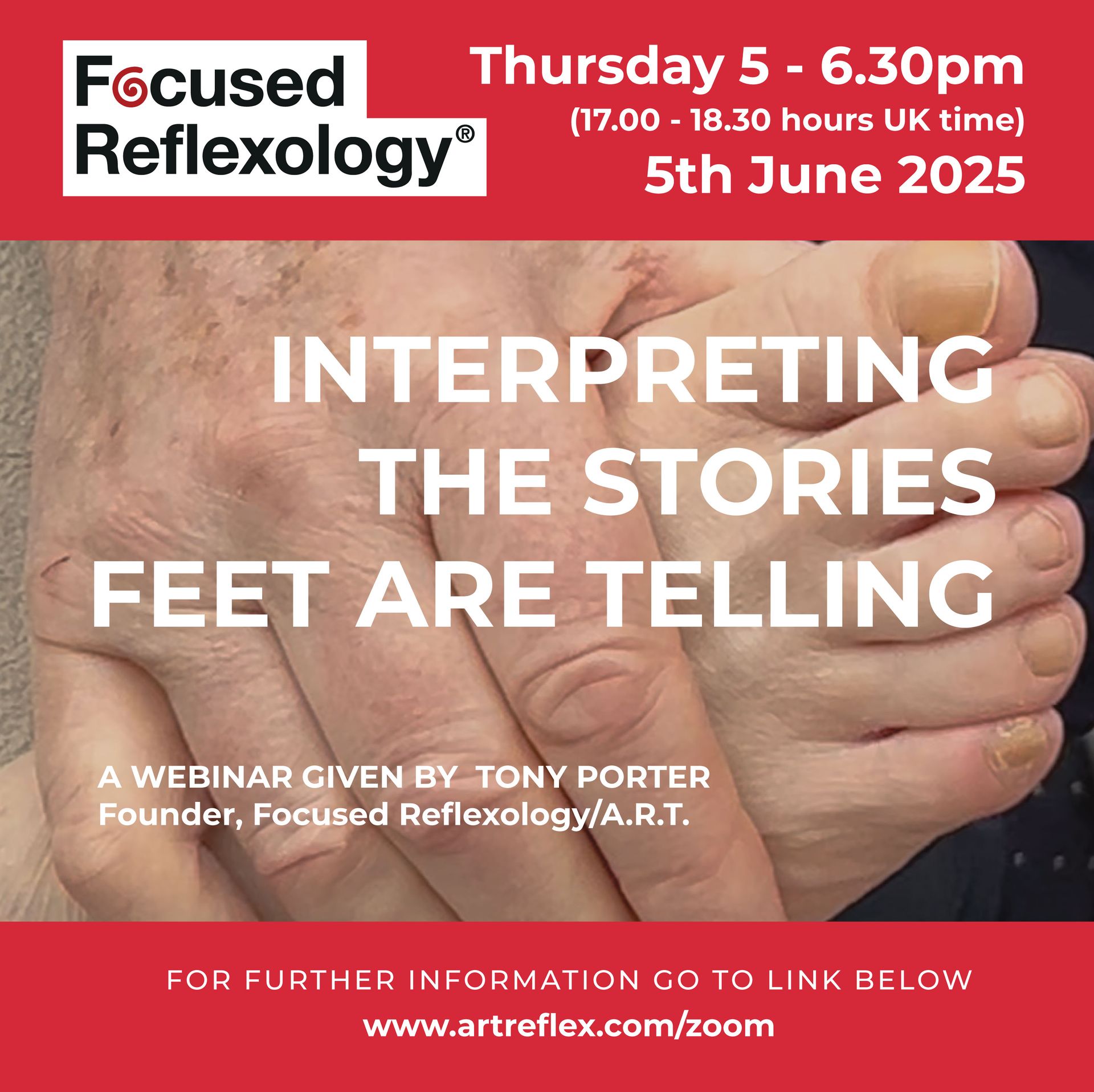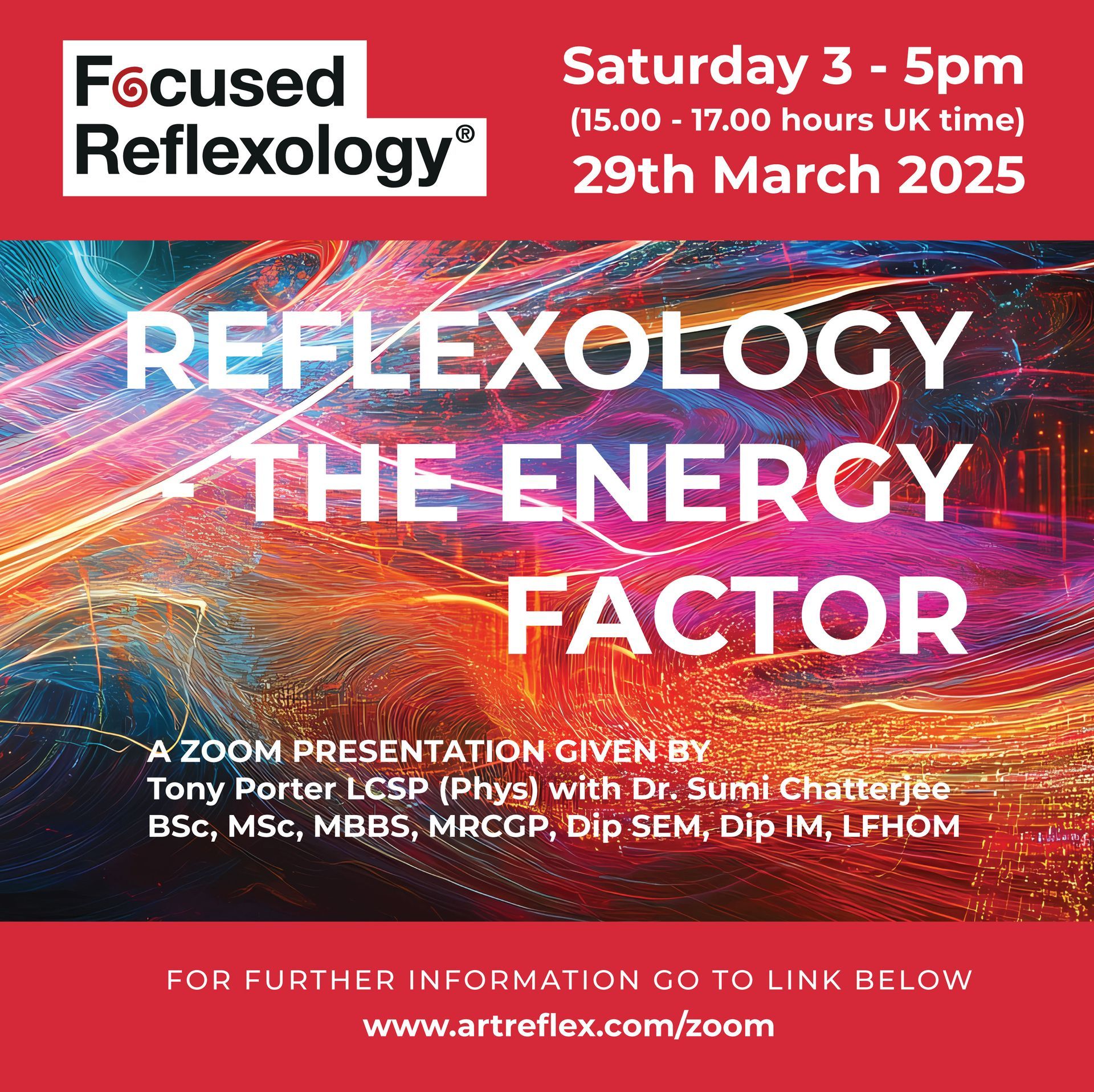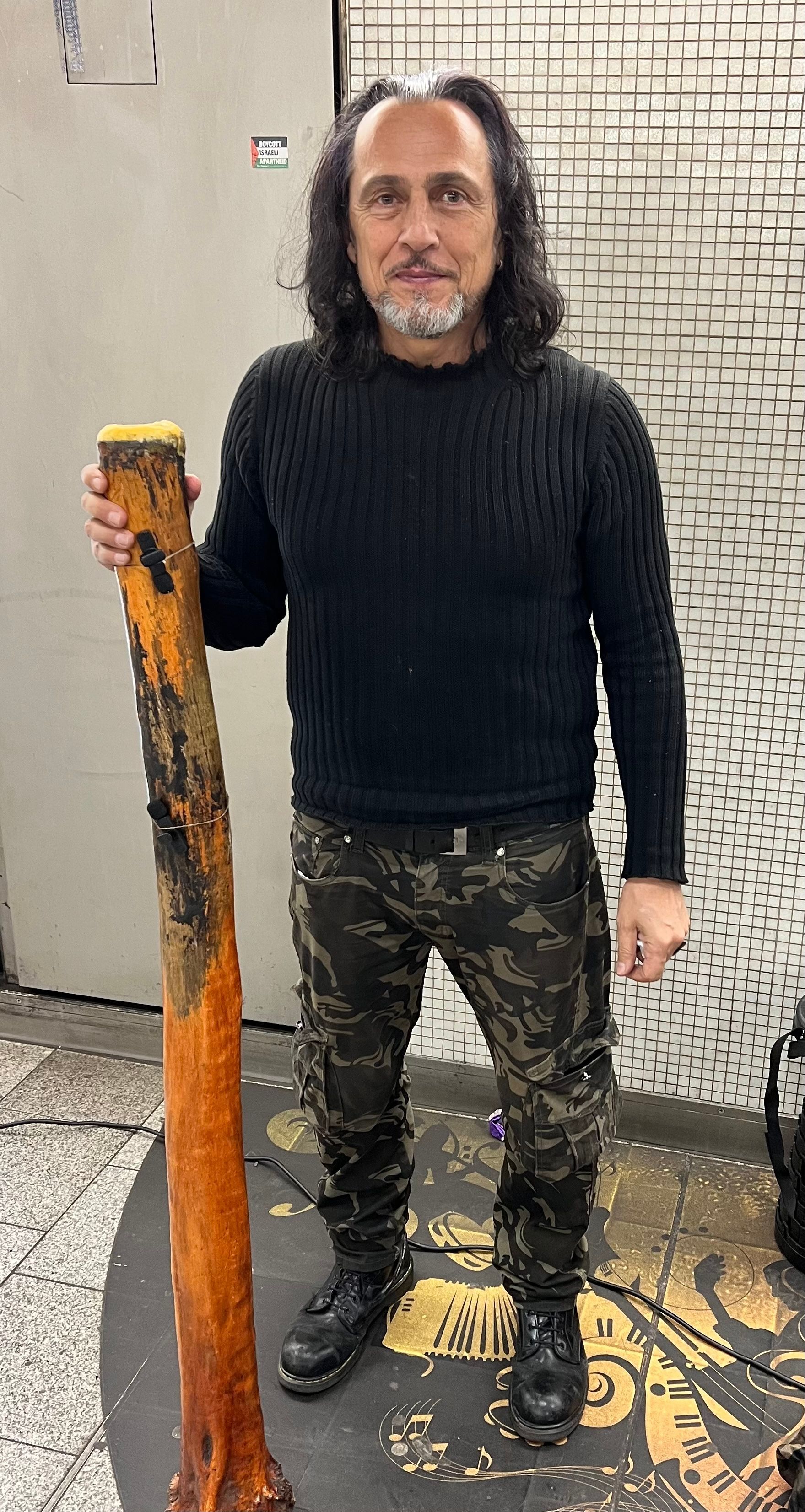Fascia, the communicating matrix of reflexology
Dear ARTists and Reflexologists everywhere
My thoughts are with you during these difficult times, and I hope that you are keeping healthy and active. Besides all the tragedy caused by Covid-19, there is a positive side. People are finding time to discover activities rather than being glued to a T.V., phone or computer screen all the time. (I ditched my T.V. several years ago which proved to be a revelation).
I am in the process of sorting out my archives which have accumulated over 46 years of reflexology. The extra incentive to complete this task was through a request by my friends Ignatio Santchez & Daniel Pontent, founders of the proposed Eunice Ingham Museum of Reflexology, which will be based in Florida once a permanent site has been found. They want my archives to be part of the museum display.
During the sorting out I found there was a lot of information which I thought would be of value, and for this reason, I decided to place some of the information here on the A.R.T. website. The following notes have been taken from articles I wrote over the years, the ones here include some of the most recent.
I have included a small selection for your perusal. Apologies for the lack of grammatical accuracy or subject order as most of them were jottings made on my travels. Despite this, I hope you will glean something of value from them.
Round, like a circle in a spiral, like a wheel within a wheel
Never ending or beginning on an ever-spinning reel.
From the ‘Windmills of your mind’
By Michel Legrand
Lyrics A&E Bergman.
The lyrics above describe the ‘energy’ and action of reflexology perfectly, and I hope that by reading the blog, you will also agree.
The general view that reflexology works through direct, nerve pathways from the feet to the organs is built on shaky foundations.
The reflex stimulus we give to the feet is conducted to the brain and not directly to the various structures of the body. Although this view has gained credence, it still does not explain by what pathway the reflex, stimulus uses to reach the brain? It is known that the Vagus nerve is a major player as it has such a large area of influence and conducts efferent and afferent communication to and from the brain.
During my early training in various aspects of physical therapy, I was taught of the importance of manually releasing the soft tissues of the neck before anything else. (This was performed manually) Very often this was enough to resolve a long-standing problem of the lower back or elsewhere.
I have to thank my dear, late friend, teacher and mentor Arthur Lincoln Pauls, Founder of Ortho-Bionomy, for making me aware of the integrity of the body all those years ago.
Releasing the soft tissues of the neck (which is performed passively) has an influence on the vagus nerve as it exits through the skull and into the neck at the Jugular Foremen.
The far-ranging release, which came about through relaxing the neck, gave me a clue to the existence of an inherent ‘web’ of communication throughout the body.
I became increasingly aware of the complete harmonious integration of the entire panoply of the body. Being aware of this gives a deeper understanding of reflexology. As an example taking the case of low back pain, or for that matter, pain emanating from any level of the spine.
Examination of the spinal reflexes of the feet will reveal the symptomatic disturbances corresponding to the pain. If there was a trauma to the spine, this would be a valid reflex area of treatment. The majority of spinal or structural pain is not always caused by direct trauma. But through being in prolonged, unnatural postural positions, such as sitting in front of computers for long periods or hunched over mobile phones which are just two examples of practices which place continuous strain on the entire structure, causing a myriad of problems elsewhere in the body.
Originally, body-workers of many disciplines were weaned on the mantra of ‘Structure Governs Function’ — meaning that lesions in structural tissues will affect function in their related areas. A lesion is an abnormality in the tissue, caused by disease or trauma. So an example would be the way a lesion in a structure can affect the function to its related part.
However, this can take place the other way round - Function Governs structure.
I have seen instances where a disfigurement of areas of the feet were caused by a diseased organ such as the heart. It is a well-established observation that the existence of bunions is common amongst those with thyroid hormone problems, and not forgetting severely cracked skin on the heels, which keeps on returning after being filed away — this can be sign of a metabolic disturbance such as that caused be thyroid, hormonal problems.
These are examples of disturbed or abnormal function within the body, gaining an external expression.
You may be thinking by now how this fits in with back pain?
Once you have grasped the complexity of the integration of the body, it will be understood that any disturbed reflex in the feet can have involvement to the spine and other parts of the skeletal system.
To make my point clear. In the case of low back pain, for example, the direct or symptomatic reflexes will, no doubt be detectable, but what of the factors such as those of the stomach, liver, colon, reproductive reflex areas of both sexes and so forth. These can also be significant, contributory or causative factors in the same way that a gall bladder/liver problem can also be a significant factor in shoulder pain and function.
It is for this reason that the textures of the reflexes play such an essential part of the initial reflex assessment. What I mean by textures is the change in the tone of the soft tissue at a reflex point — there is a range of various types of textures displayed. These only occur when the reflex is energetically ‘disturbed’ and therefore making it a valid reflex to treat.
It can be understood what an advantage it is to work in this way as only the valid (disturbed) reflexes receive the proportional amount of attention required. These disturbed areas, occur all over the surface of the body and are not only confined to the feet.
When these factors are taken into account and recognised as being potential factors in whatever condition which is presented, it will give a most significant boost to the efficacy of treatments. It gives credence to the fact that reflexes also relate to other areas of the body and not only to their direct correspondences — a type of mirror or ‘phantom’ correspondence.
What has to be understood is that the reflexes, apart having a direct correspondence to their related parts of the body, also have other areas of influence — a type of reflex shadow of influence over other areas.
To sum up on this somewhat rambling explanation. No matter what the presenting symptoms or indications are, it is necessary to be able to locate the disturbed.
Any painful and disturbed reflex can be the cause of a problem elsewhere in the body no matter how distal it may be. As an example, that disturbed reflex in the small intestine area, could be a contributory factor in a fertility problem.
To Quote Eunice Ingham ‘Let the feet reveal the answer’
The feet will reveal the answer if we listen through our hands and fingers:
‘In all the myriad sounds of Earth’s many-coloured dream. There runs a secret tone for the one who knows how to listen.
The lyrics above describe the ‘energy’ and action of reflexology perfectly, and I hope that by reading the blog, you will also agree.
The general view that reflexology works through direct, nerve pathways from the feet to the organs is built on shaky foundations.
The reflex stimulus we give to the feet is conducted to the brain and not directly to the various structures of the body. Although this view has gained credence, it still does not explain by what pathway the reflex, stimulus uses to reach the brain? It is known that the Vagus nerve is a major player as it has such a large area of influence and conducts efferent and afferent communication to and from the brain.
During my early training in various aspects of physical therapy, I was taught of the importance of manually releasing the soft tissues of the neck before anything else. (This was performed manually) Very often this was enough to resolve a long-standing problem of the lower back or elsewhere.
I have to thank my dear, late friend, teacher and mentor Arthur Lincoln Pauls, Founder of Ortho-Bionomy, for making me aware of the integrity of the body all those years ago.
Releasing the soft tissues of the neck (which is performed passively) has an influence on the vagus nerve as it exits through the skull and into the neck at the Jugular Foremen.
The far-ranging release, which came about through relaxing the neck, gave me a clue to the existence of an inherent ‘web’ of communication throughout the body.
I became increasingly aware of the complete harmonious integration of the entire panoply of the body. Being aware of this gives a deeper understanding of reflexology. As an example taking the case of low back pain, or for that matter, pain emanating from any level of the spine.
Examination of the spinal reflexes of the feet will reveal the symptomatic disturbances corresponding to the pain. If there was a trauma to the spine, this would be a valid reflex area of treatment. The majority of spinal or structural pain is not always caused by direct trauma. But through being in prolonged, unnatural postural positions, such as sitting in front of computers for long periods or hunched over mobile phones which are just two examples of practices which place continuous strain on the entire structure, causing a myriad of problems elsewhere in the body.
Originally, body-workers of many disciplines were weaned on the mantra of ‘Structure Governs Function’ — meaning that lesions in structural tissues will affect function in their related areas. A lesion is an abnormality in the tissue, caused by disease or trauma. So an example would be the way a lesion in a structure can affect the function to its related part.
However, this can take place the other way round - Function Governs structure.
I have seen instances where a disfigurement of areas of the feet were caused by a diseased organ such as the heart. It is a well-established observation that the existence of bunions is common amongst those with thyroid hormone problems, and not forgetting severely cracked skin on the heels, which keeps on returning after being filed away — this can be sign of a metabolic disturbance such as that caused be thyroid, hormonal problems.
These are examples of disturbed or abnormal function within the body, gaining an external expression.
You may be thinking by now how this fits in with back pain?
Once you have grasped the complexity of the integration of the body, it will be understood that any disturbed reflex in the feet can have involvement to the spine and other parts of the skeletal system.
To make my point clear. In the case of low back pain, for example, the direct or symptomatic reflexes will, no doubt be detectable, but what of the factors such as those of the stomach, liver, colon, reproductive reflex areas of both sexes and so forth. These can also be significant, contributory or causative factors in the same way that a gall bladder/liver problem can also be a significant factor in shoulder pain and function.
It is for this reason that the textures of the reflexes play such an essential part of the initial reflex assessment. What I mean by textures is the change in the tone of the soft tissue at a reflex point — there is a range of various types of textures displayed. These only occur when the reflex is energetically ‘disturbed’ and therefore making it a valid reflex to treat.
It can be understood what an advantage it is to work in this way as only the valid (disturbed) reflexes receive the proportional amount of attention required. These disturbed areas, occur all over the surface of the body and are not only confined to the feet.
When these factors are taken into account and recognised as being potential factors in whatever condition which is presented, it will give a most significant boost to the efficacy of treatments. It gives credence to the fact that reflexes also relate to other areas of the body and not only to their direct correspondences — a type of mirror or ‘phantom’ correspondence.
What has to be understood is that the reflexes, apart having a direct correspondence to their related parts of the body, also have other areas of influence — a type of reflex shadow of influence over other areas.
To sum up on this somewhat rambling explanation. No matter what the presenting symptoms or indications are, it is necessary to be able to locate the disturbed.
Any painful and disturbed reflex can be the cause of a problem elsewhere in the body no matter how distal it may be. As an example, that disturbed reflex in the small intestine area, could be a contributory factor in a fertility problem.
To Quote Eunice Ingham ‘Let the feet reveal the answer’
The feet will reveal the answer if we listen through our hands and fingers:
‘In all the myriad sounds of Earth’s many-coloured dream. There runs a secret tone for the one who knows how to listen’
Friedrich Schiegel
This is part of a separate paper.
This can be demonstrated and experienced by working specifically on the toes, with the most effective range of techniques. If the techniques are used correctly, and with sufficient focus, a response will manifest in other areas of the body, which seemingly have no reflex relationship to the reflexes of the toes. The more I used this modality, the better the responses became, and as I have already mentioned, it had an ‘amplifying’ benefit to the general treatment.
I have repeatedly stated that it is possible to give a full treatment just by working specifically on the toes. The toes have a wide area influence in the body, and this is something which has always interested me.
(The techniques of working the toes, form a major part of A.R.T. training.)
I could not accept that it was only due to the reflex or the classical neurological model. — there had to be something else.
It was during this time that I had an invitation to give a presentation at a conference on the influence of the Fascia several years ago that I realised what that ‘something else’ was.
As the various presenters gave their presentations on the Fascia, I realised that it was this which formed the primary communication between the feet and areas of the body.
I discovered that the existence of the Fascia is not only confined to the human body but is ubiquitous throughout nature.
The Fascia - connects everything in the body as one functional unit. It is truly a matrix — a ubiquitous web of support and communication to and from all parts of the body. It covers every one of the 5,000 structures of the body; Every nerve, muscle, organ, gland etc. are covered by different types of fascial tissue. It keeps moving parts of the body protected and prevents them from sticking to each other, like a well-oiled engine.
The illustration shows the extent of the Fascia of the body, a version of the human internet.
The fascia is a continuous web of communication throughout the body. The Fascia is the most universal tissue in the body, and yet its influence is only really being investigated. It holds a great amount of secrets waiting to be discovered, and is a major influence on reflexology and also acupuncture.
Consideration of the fascia will enable a better understanding of the principle of reflexology. In the next chapter I will explain that on some reflex areas of the feet, there is a reflex within a reflex.
The fascial, web is not just related to the Human form.
It is of interest to note that a type of fascial web runs throughout nature and even the universe.
As an example, right here on planet earth, nature’s fascia casts its influence beneath our feet. The next time you go for a walk in a forest, or park, look at the trees, it may seem that they are individuals existing on their own. Nothing could be further from the truth. Beneath the soil is an enormous structure — a mycelium, a fungal network, an internet of nature a ‘Wood Wide Web’ connecting everything.
Those trees you see as being individuals are all interconnected to other trees through the mycelium web of the fungus. The mycelium is composed of millions of thread-like structures. It is these that create a network of communication between the trees and plants even though hundreds of meters apart an organic internet.
This fungal network serves not only as a means of communication but also as a means of support. For example, if a tree is having difficulties in surviving, other trees will send extra nutrition, or in the case of an infection a chemical antidote.
The Mother tree
There are trees which are older and larger than the others; these will be the Mother or sacred trees which, for want of a better description will be a centre (hub) of communication with the other trees of the forest, acting as a server in natures wood-wide net. From here it directs nature’s pharmacy, sending organic ‘medicines’ through the strands of the mycelium giving help to the trees which need it.
We become aware of this web in the autumn when various types of fungi appear, which are the flowers of the mycelium.
The role of the Mother Tree was very well depicted as Eywa by Director James Cameron in his film Avatar.
Eywa was the biggest and oldest tree in the forest. It was the guiding force and deity of Pandora, which was one of the moons of a fictional planet which acted to keep the ecosystem working in perfect homeostasis.
(The film is analogous to the way mankind is wantonly destroying areas of the Amazonian rain forest. While on this subject 280,000 square miles have been destroyed since 1978 This continues at the rate of 80,000 acres daily!)
James Cameron, apart from being a great director, obviously has infinite knowledge of the Gaia principle, which is that all living organisms interact with each other for the purpose of maintaining the homeostasis of the planet.
There is an incredible similarity between the strands within the fascia, the tissue of the synapses of the nervous system and the strands or filaments of the mycelium.
This is not all, It is thought that a cosmic web exists, linking everything in the known universe.
It is by becoming aware of the infinite complexity and influence of the nervous system and the fascia, (which is accepted as being a second nervous system), which gives reflexology greater credence.
It is because of this complexity that the reflexes cannot have exclusivity to an organ, gland or structure of the body; there will always be overlapping onto other structures.
There is a new world to the understanding of reflexology emerging. The simplistic view of pushing button A to produce a response to button B can no longer remain as being valid. It is this belief which is the reason for the continuing dilution of the therapy to nothing more than a spa-type foot pampering. Thankfully there are those involved in reflexology which are not of this persuasion.
Having a deeper understanding of reflexology reveals the futility in believing that a reflex, for example of the stomach, relates exclusively to that organ is a fallacy. A disturbed stomach reflex could quite easily be the cause of neck or shoulder pain. In this case, working on the reflexes to those areas will, at the most only be palliative. This is why developing the ability to detect disturbed reflexes is the golden key to effective reflexology.
Everything and everyone is connected, there are no empty spaces in the body or anywhere.
With this in mind, I leave you with the following quote:
The world is a mirror of infinite beauty, yet no man sees it. It is a Temple of Majesty, yet no man regards it. It is a region of Light and Peace, did not men disquiet it. It is the Paradise of God.
Thomas Traherne 1636 - 1674
Best Wishes, good health, stay safe and be positive.
Tony Porter ©
Director/Founder A.R.T and Focused Reflexology.



